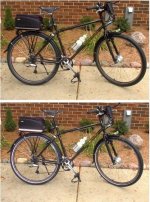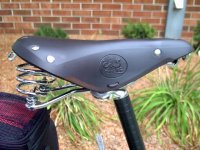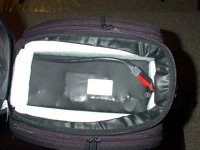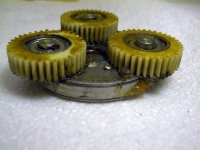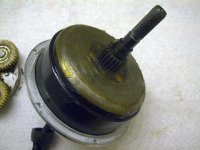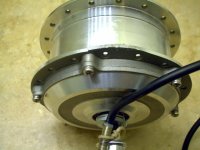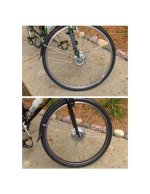36V revisited
Ever since I purchased a 48V/10Ah LiFePO4 battery I’ve turned into something of a power hog using as much as 66% more energy per mile as I once did when I rode my first E-bike early this year. Back then I could stretch a 36V/9Ah SLA pack (5.4Ah usable) to 32 miles. When I switched to using 3 Bosch Fatpacks (~6.4Ah max) I got a little faster and used slightly more energy but I was still able to stretch the little pack out to 32 miles and once even 37 miles, admittedly with a conservative throttle but still using the motor to assist at least 80% of the time. Back then it was pretty easy to run in the 6-7 Wh/mile range since the Bafang on 36V wasn’t capable of high speeds. Still even when I added a 12V SLA in series with the Fatpacks I was able to keep energy use in the 7-8 Wh/mile range while boosting average speed by at least 1 mph. Again since the SLA would die at just over 4.7Ah I needed to conserve most of the time. Much of that restraint flew out the window when I got the 48V/10Ah battery and ever since I’ve been using power in the 10-11 Wh/mile range with that dipping to 9 Wh/mile only on longer than normal rides. The 10-11 Wh/mile range isn’t bad but that’s because there is still one tiny thing holding me back…the Bafang motor. If I were to use full power all of the time I’d not only probably consume double the power, I’d send the poor little Bafang to a premature grave from over-heating.
This brings me to the purpose of today’s ride at 36V, to answer the question “could I ride with greater efficiency at 36V…or at all for that matter or had I just gotten lazyâ€Â. Anyway the other reasons for the ride at 36V were to discharge the Fatpacks since I don’t know when I’ll use it again this late in the season and because it’s chilly out (47F, 8C) and a slower ride with less wind-chill seemed like a good idea.
The power drop at 36V compared to 48V was instantly noticeable as was the need to use far more throttle. On the plus side, the motor operated more quietly. It didn’t take too long for my internal speed-O-meter to adjust and on the bike path portion of the trip I settled into spinning one gear lower and perhaps 1.5 mph slower than at 48V. With virtually no one else on the path today there were no ‘rabbits’ to pursue or riders approaching from the rear to egg me on either so it was a nice serene ride. Once off the path the wind and grades were more noticeable than at 48V but it wasn’t until I hit the wide open road that the lower speeds felt, well…pokey. The last 4.5 miles of this route is mostly a lightly traveled frontage road with for the most part a 50 mph limit. With the 3 Fatpacks half-empty and an unfavorable wind full throttle and pedaling yielded speeds of 18-20 mph. Generally at 48V I’m flying along this stretch at easily 5 mph faster. I ended the ride at the slowest average speed I’ve done in a long time, 16.4 mph. I have noticed with the advent of colder temps my speed has dropped on the past few rides so it’s partly that. Aside from the lower speed I didn’t make any effort to conserve power using the throttle most of the time to provide some assist and I ran full or near full throttle the last 4.5 miles of the 18.2 mile trip. The end result was 7.96 Wh/mi, not stellar but I have no other rides at 36V on this bike to compare it to at this locale.
After a brief rest and a little snack I loaded up the 48V battery for another trip. I wanted to see what the power consumption would be if I rode the exact same speed over the same route as I had just done at 36V. It took a light touch on the throttle to do it but It seems I had quickly adjusted to the lower speed, in fact due in part to being less fresh than the first ride I found at the half-way point I was running at about a 0.4 mph deficit. No matter once out on the country roads I spun up the legs and the motor to quickly make that up. The challenge was keeping the speed to 18 mph on that last 4.5 miles of open road which took only about half throttle at 48V. A half-mile from home I hit the same average speed as before then just held it there. The result was perhaps not surprising; to cover the same distance at the same speed I used an almost identical amount of power, in this instance 7.78 Wh/mile for 48V compared to 7.96 Wh/mile for 36V. The difference was it was easier to ride slower at 36V, which also should come as no surprise.
Before I purchased the 48V/10Ah battery I went back and forth between it and a 36V/15Ah version. I would likely get better range with the latter but the former is definitely more fun and with a lot of self control it can be ridden at the same speed resulting in lower power consumption per mile.
Oh yeah and the answer to “have I gotten lazier?†is; well perhaps a little but I still come home from each ride sweaty and heck I rode 36.4 miles today and 3,700 miles this year, that’s gotta be worth something.

-R




